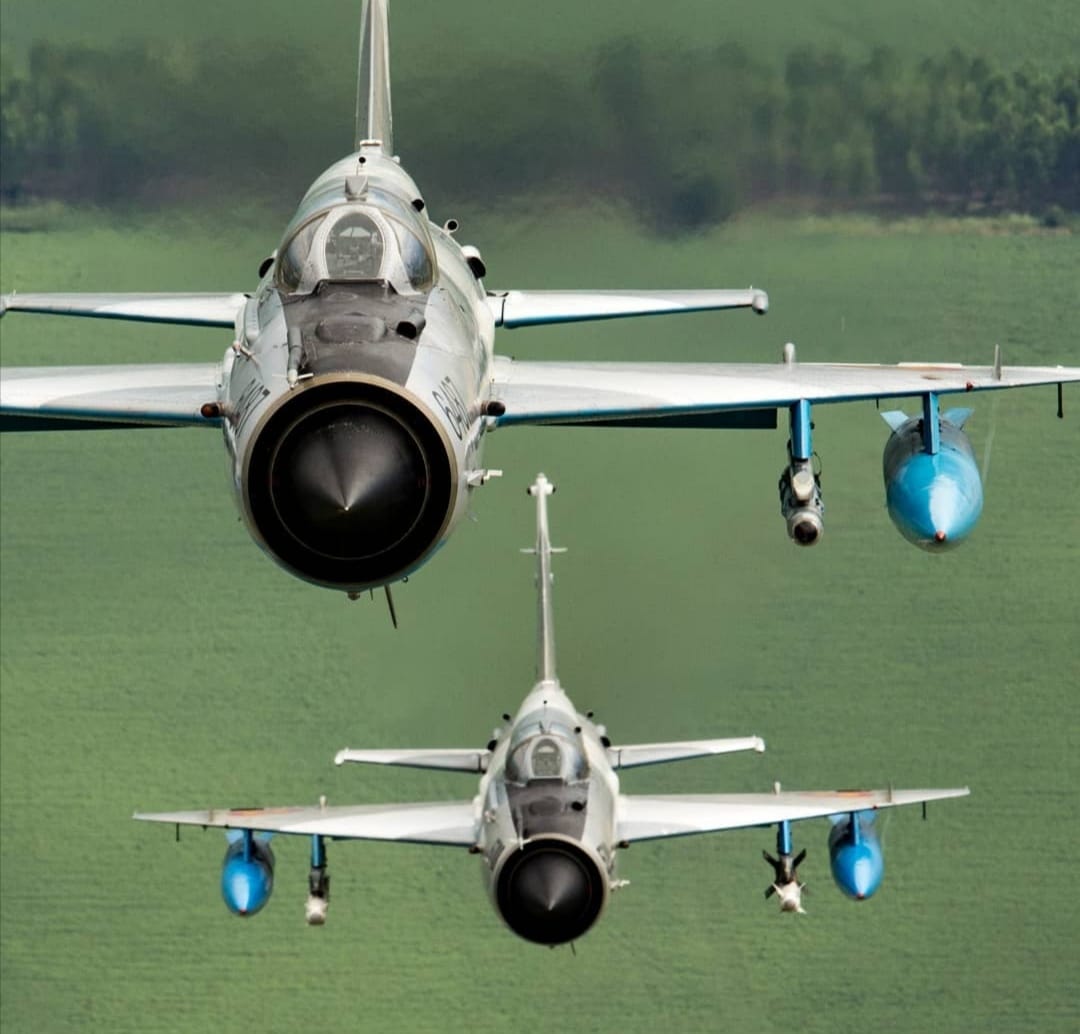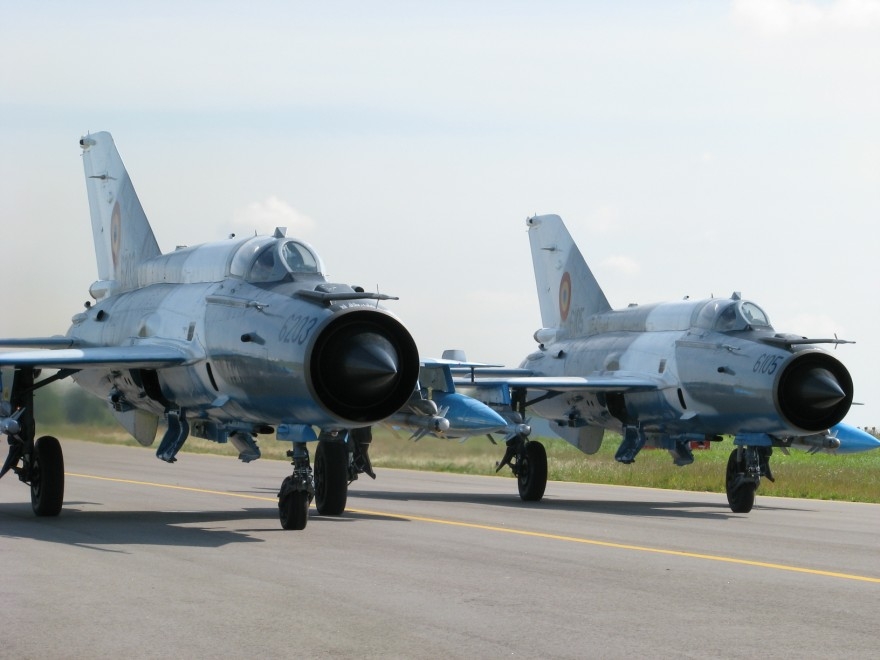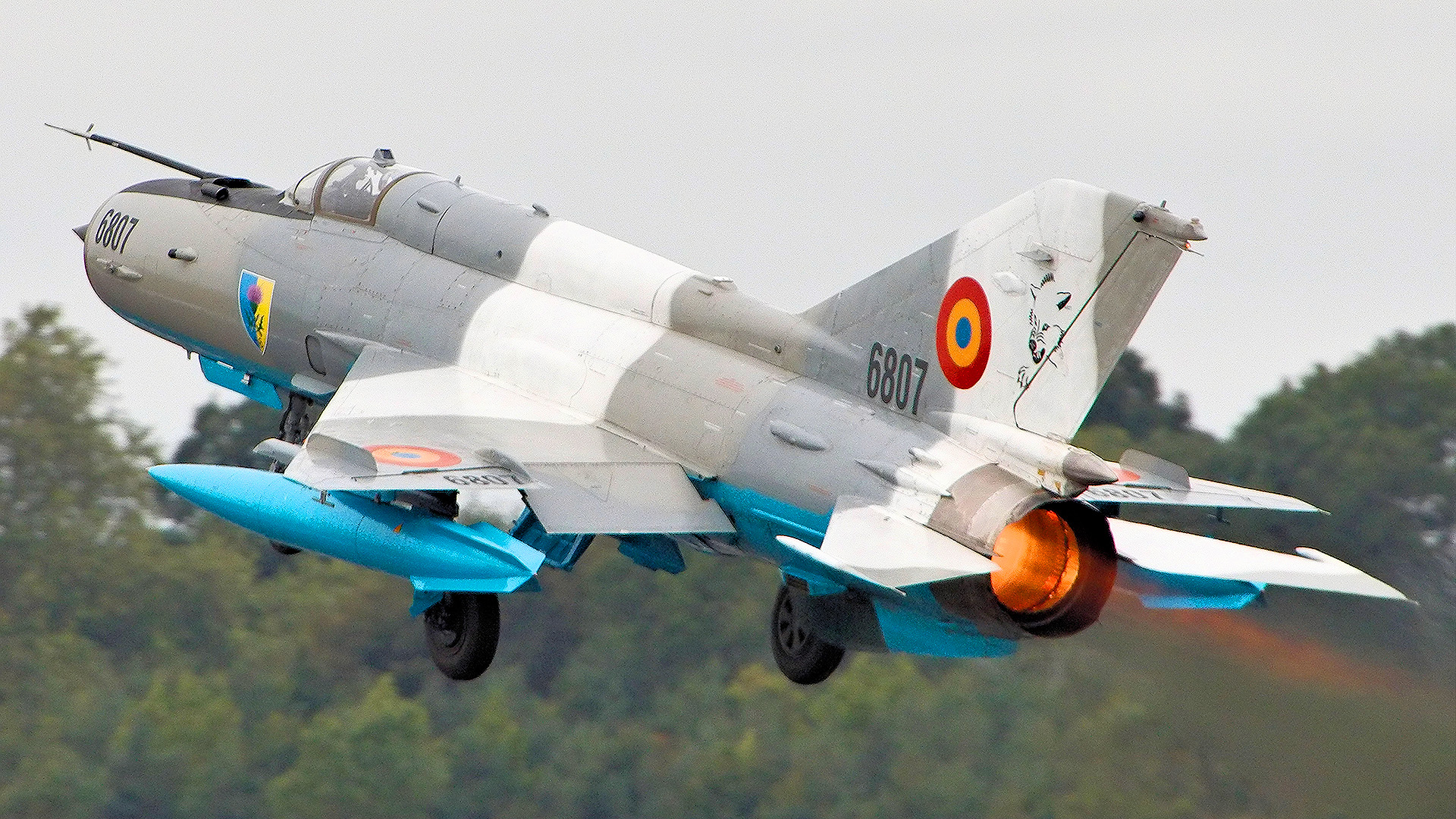Romania has announced that it is returning its MiG-21 LanceR fighters to the skies after it said its remaining flying airframes would be permanently grounded on April 15, 2022. The original stand-down of flying operations came after a spate of crashes involving the type, the most recent occurring on March 2nd, 2022. At the time of the grounding, Romania said they would focus on accelerating its transition to the F-16AM/BM, and that those aircraft and their crews could take on the LanceR’s role, including providing air sovereignty patrols and alert scramble capacity for defending Romania’s airspace. That plan has now been officially jettisoned, with the deeply upgraded MiG-21s set to serve for at least another year.
The decision was made by Romania’s Supreme Defense Council with the aircraft slated to provide a narrow air policing mission set during its one-year flying extension. As it sits now, on May 15th, 2023, the MiG-21s will finally be removed from the Romanian Air Force’s inventory. As part of plans to replace these jets, 17 F-16AM/BMs were previously bought second-hand from Portugal and another 32 are still set to be delivered from Norwegian stocks, but the latter process has been delayed somewhat.
Before the type’s grounding, Romania had roughly 27 MiG-21s flying, with 19 being LanceR-Cs, the most capable version that is able to perform the air defense role, and the rest being less-capable LanceR-Bs, which are essentially two-seat trainers with air-to-ground and rudimentary air-to-air capabilities. At its height, Romania put 111 MiG-21s through the LanceR upgrade program.

Without an influx of Norwegian Vipers, trying to convert fully over to the F-16 while also fulfilling key air defense roles is clearly a huge challenge, one that likely resulted in the MiG-21s being put back into service as an interim capability gap-filler. Maintaining a high-alert status when it comes to defending Romania’s airspace has only become more critical since Russia invaded neighboring Ukraine in late February. The fact that the Romanian Air Force sidelined its LanceR-Cs in April with so few F-16s on hand and transition still underway was surprising considering the circumstances Romania was facing in the region.
Romania’s statement on the reactivation of some of its LanceR force also included a mentioned its intention to “initiate steps for the fifth generation aircraft acquisition program,” which further highlighting the country’s desire need to rapidly modernize its air combat capabilities even beyond the F-16 in light of the threat posed by Russia. In February, before the conflict in Ukraine broke out, Romanian President Klaus Lohannis said his country was looking to acquire F-35s in the 2030s.
The LanceR-Cs are actually far more modern fighters than their base platform lets on. While yes, the LanceR-C is still a MiG-21, its avionics are equivalent to a fourth-generation fighter. Israel did the conversions, which includes a modern multi-mode pulse doppler radar, mission computer, and the ability to employ precision-guided munitions, such as laser-guided bombs. An integrated self-protection suite and the ability to carry Israeli electronic warfare pods only add to the type’s potency. A helmet-mounted display and modern cockpit with multi-function displays and hands-on throttle and stick round out the type’s major features. The ability to execute precision attacks and to integrate western smart weapons, along with possessing a modern radar and electronic warfare capability, could have provided Ukraine with an interim fighter to beef up its air combat force. That didn’t come to pass and it turns out that the LanceR-Cs are still needed by Romania. You can read all about the type’s capabilities and how it could have benefited Ukraine in this past feature of ours.

While remaining MiG-21 fleets around the globe have proven accident-prone, the type remains hard to let go of for various reasons. In Romania’s case, grounding the LanceR-C during such a time turbulent period geopolitically and in terms of transition within its own air force didn’t end up sticking, but it now seems like the type’s days in Romanian service are indeed numbered as the country’s air arm morphs into a major F-16 operator.
Contact the editor: Tyler@thedrive.com
